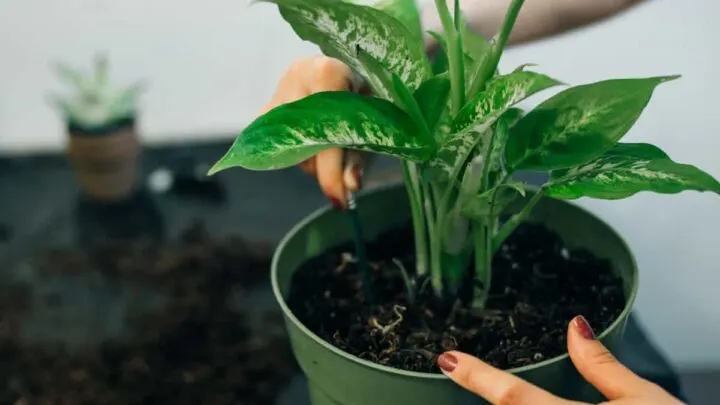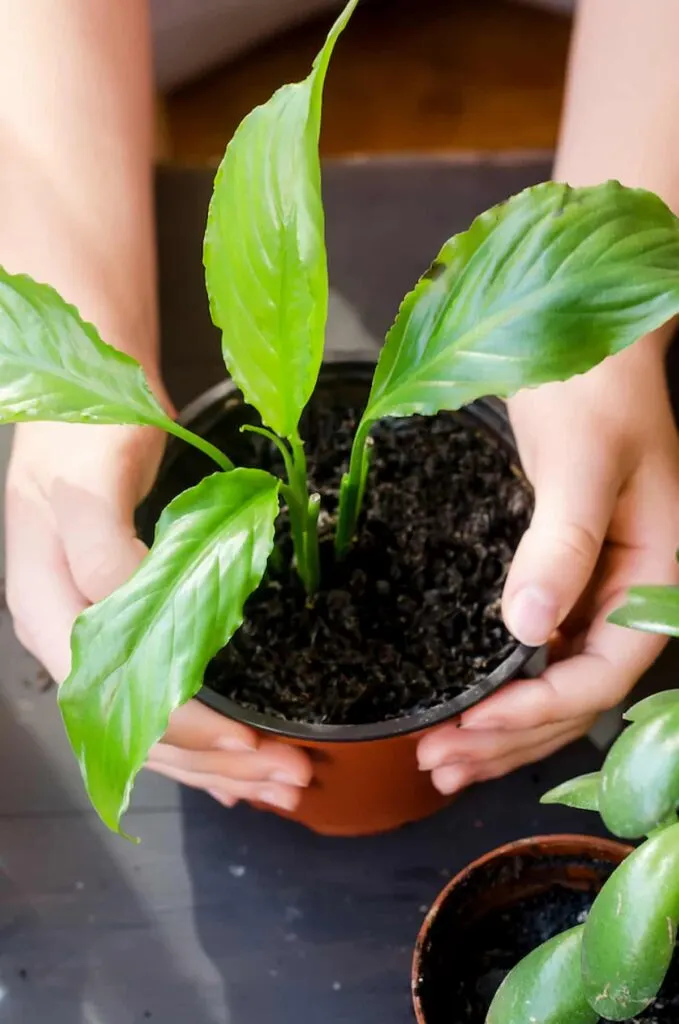When we think of plants, it is not common to think they have genders. However, all flowering plants have either male parts, the stamen, female parts, the pistil, or both. The stamen of the plant will produce pollen. The pollen then needs to be transferred to the pistil, where the pollen will continue down the pistil into the plant’s ovary. Here, the plant will undergo pollination, and the pistil when grow into a fertilized seed or fruit.
Succulents tend to have female and male plant parts within their blooms. Succulents also have a unique way of propagating that does not rely on pollinating or flowering.
Read on to discover more about succulents, cacti, their genders, and more.

Are succulents asexual?
Succulents can reproduce very efficiently through asexual propagation. This process involves removing part of the succulent, usually a petal or leaf, and allowing it to root.
These sections of succulents will root in both water and soil, making it easy to create new plants with little fuss. The process of using a piece of the ”mother plant” to grow new daughter plants is also called vegetative propagation.
Are there male and female cactus plants
Cacti flowers have both male and female parts. This allows them to reproduce when the male stamen produces pollen that is then transferred to the female pistil. The pollination can occur by wind blowing the stamen and pollen into the pistil, or bees or other insects can transport the pollen.
In the regions where cacti are native, it is harder to find pollinating insects or birds. Thus, cacti have evolved and can also reproduce asexually. This process is the same as when you propagate a succulent. A piece of cacti will be removed from the mother plant and allowed to grow roots. Once replanted, this new cactus will continue to grow into an adult cactus.
Do succulents have pups?
Sometimes, small baby succulents grow at the base or near a succulent plant. These small plants are called pups and are offshoots of the main plant. The pups are often connected to the mother plant by delicate roots and can be fairly easily removed and replanted in a new pot as a separate plant.
If you do not want to go through the trouble of removing the new plant babies, usually, the mother plant will be able to survive and thrive with the added plant. However, if you notice your succulent looks tired, wilting, or stressed out, try to remove the pups as they add strain to the mother plant.

When Do succulent plants reveal their gender
Most succulent plants contain both male and female parts in their flowers. You can tell if the flowers have stamens or pistils when the bloom opens.
To check for a stamen, look for long, thin pin-like structures with pollenstils will look like a swollen vase in the center of the flower. Ideally, your succulent flowers will have both male and female parts in each bloom. When both genders are present in a flower, it can pollinate itself easily. Once the flower is pollinated, the pistil will begin turning into either a seed or a fruit.
Differences Between Male And Female Plant Parts
Similar to humans and other mammals, both male and female plant parts are necessary for pollination. Pollination is the process in which pollen is used to ”fertilize” the female part of the plant, thus producing either seeds or fruit.
The male parts of a plant are located within the center of the flower bloom. This part is called the stamen. Stamens are tall, thin, pin-like structures that contain pollen on the end. The female parts of the plant are called the pistil.
This part is located within the center of the plant and looks like a swollen vase. In a perfect flower, the pistil is in the center of the flower with the stamens surrounding it. When the wind blows or when bees come to drink nectar, the pollen is moved from the stamen and into the pistil.
How Do Light Periods Affect Plants Gender?
When looking to discover a plant’s gender, some gardeners have turned to use lights. In some cases, when grow lights are used for 12 hours on 12 hours off, the plant will reveal its gender faster than if no lights were used.
This is a fancy way to say that the plant will produce blooms quicker than if left to its own growth cycle. Male plants tend to grow taller than the female plants of their species. However, most plants do not have genders and instead grow flowers containing both male and female parts.
Once the flower has bloomed, look for stamens and pistils within the plant. Stamens are male parts and look like thin pins with a top of pollen, while female pistils look like swollen vases in the center of the flower.

Final Thoughts
Succulents and cacti are unique and interesting plants. They have been known to be some of the hardiest and easiest houseplants to care for. Due to their native regions where pollinators can be scarce, succulents have adapted and can reproduce in asexual ways.
One way they can reproduce is through vegetative propagation. This is the process of removing part of the mother plant, like a leaf, and allowing it to grow its own roots either in soil or water before replanting it elsewhere.
The other process of asexual reproduction is when the succulent grows pups or baby plants that are attached to the bottom of the mother plant or entangled in her roots.
When looking into the reproduction of cacti and succulents, you need to wait for the plant to flower. Inside the flower, you will find the male reproductive parts, the stamen, and the female reproductive parts, the pistil.
The stamen will produce pollen on the end, and then either wind, bees, or other pollinating insects will help get the pollen to the female part of the plant, the pistil. Once the pollen has entered the pistil, pollination has occurred. The flower will then either produce a seed or a fruit.
Most plants are not gendered and have both male and female parts within their flowers. This allows for easy self-pollination and reproduction. Asexual reproduction allows for simple and easy propagation even for beginner plant owners, making succulents the perfect house plant for newbies who want to experiment. With a little luck, you can create endless succulent or cacti babies to fill your home or give as gifts!

Hi there, my name is Allie and welcome to my blog; GareningWithAllie!
Much of what you see written here is just our personal experiences with gardening. Along with the content I write here, there is also a unique collection of gardening topics covered by some of our close friends. I hope you find everything you read here to be helpful, informative, and something that can make your gardening journey the most lovely experience ever! With that said, Happy Gardening!
